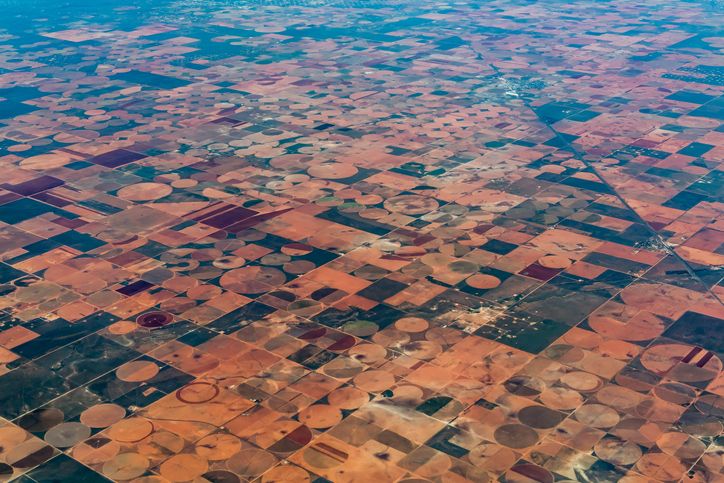Editor’s note: Joseph Byrum is an Aspen Institute Business & Society fellow and spent 25 years as an R&D executive in the agricultural industry. This is the third in a series of guest articles on the potential impact of artificial intelligence (AI) technologies on food security.
The views expressed in this article are the author’s own and do not necessarily represent those of AFN.
Droughts, floods, storms, tornadoes, and wildfires have always been a problem for growers. According to the National Oceanic & Atmospheric Administration, the US has faced 279 billion-dollar climate disasters since 1980, with the 2020’s ‘Derecho’ storms pummelling Midwestern farmers at a cost of $7.5 billion.
While the impact will be felt months and even years after the event in the form of contaminated water, lost harvests, increased disease, and destruction of irrigation, US growers do have access to insurance and disaster assistance. The consequences are even more grave in developing countries. The UN’s Food & Agriculture Organization calculated that the impact of $80 billion in crop losses over a decade translates into annual economic development losses of $50 billion and $300 billion for low and middle-income nations, respectively. This is a staggering burden on food security for the developing world.
AI can make these countries more resilient to climate disasters. The combination of data, primarily from satellites, with machine learning can help track, monitor, and predict pre- and post-disaster effects that can assist farmers to better absorb and adapt to individual climate events.
Satellites have been used in agriculture for more than 15 years thanks to the low-resolution Landsat and MODIS programs and by the mid-resolution SPOT 5 and SPOT 6 satellite programs. In the past few years AI has opened new opportunities to make the most of the rise of commercial satellite enterprises and the advent of regulations governing commercial use of unmanned aerial vehicles.
Before these developments, the limited frequency and reliability of high-resolution data rendered the available imagery far less useful. Large volumes of data covering broad geographic areas from public satellite programs are freely available online. Today, unlike a decade ago, the agricultural industry can now more easily access high-resolution data relating to specific climate disasters in real-time, enabling data analysis to take place as soon as an event happens.
This allowed us to move from algorithms that tracked the general impact of climatic trends on production agriculture to more sophisticated analysis of long-term trends in the performance and resilience of specific crops and livestock pastures. This allows farmers and agricultural scientists to design new systems of farming that are more adaptive and transformative.
Despite these developments, agriculture now faces a vastly more complex problem. Comparative historical models have become less useful in predicting climate trends that are erratic. Large volumes of high-resolution, site-specific data are useful in the aggregation of predetermined and pre-requested machine learning outcomes. It is becoming increasingly important for AI models to become more adaptive in and of themselves.
The Sante Fe Institute created a Complex Intelligence program to deal with such issues, including the development of a theory of embodied intelligence. Taking inspiration from nature and from fields such as morphological computation, the project’s objective is to develop a theoretical framework that will promote the creation of AI that learns to make decisions based on its interaction with its given environment.
“This theory will guide the creation of artificial agents that adjust their neural networks (brains) to feedback from their bodies and surroundings,” the Institute states.
“In our experiments, we do not program robots with specific behaviors such as taking steps. Rather, we tell them to seek out a rich variety of experiences by instructing them to maximize their ‘predictive information,’ a notion developed within complexity science.”
Embodied intelligence would be a transformative approach to increasing agricultural resilience through building a greater capacity for adapting to rapidly evolving climatic events. Today’s AI is built around pre-programming, and as such the ability of the AI agent to interact with its environment is less important. Aggregate learning through embodied intelligence challenges the current approach to technology development in agriculture. For the new plan to work, AI agents would have to be more than mere observers of a geographical phenomena; increasingly, they’d have to interact with their environment in a way similar to that which is required of actual agricultural crops.
These are some of the ‘think outside the box’ concepts that we have to consider to make a difference when it comes to agricultural climate resilience. Already, a host of products and services built around simpler forms of machine learning are assisting farmers to be more efficient and more sustainable in their production practices. The reality of our times, however, is that as the complexity of the natural world evolves, so too do the requirements of tech innovation to assist agriculture in meeting an increasing number of environmental challenges. Contemplating the notion of embodied intelligence allows scientists to develop systems that have the potential to increase transformative capacity of our agriculture.




